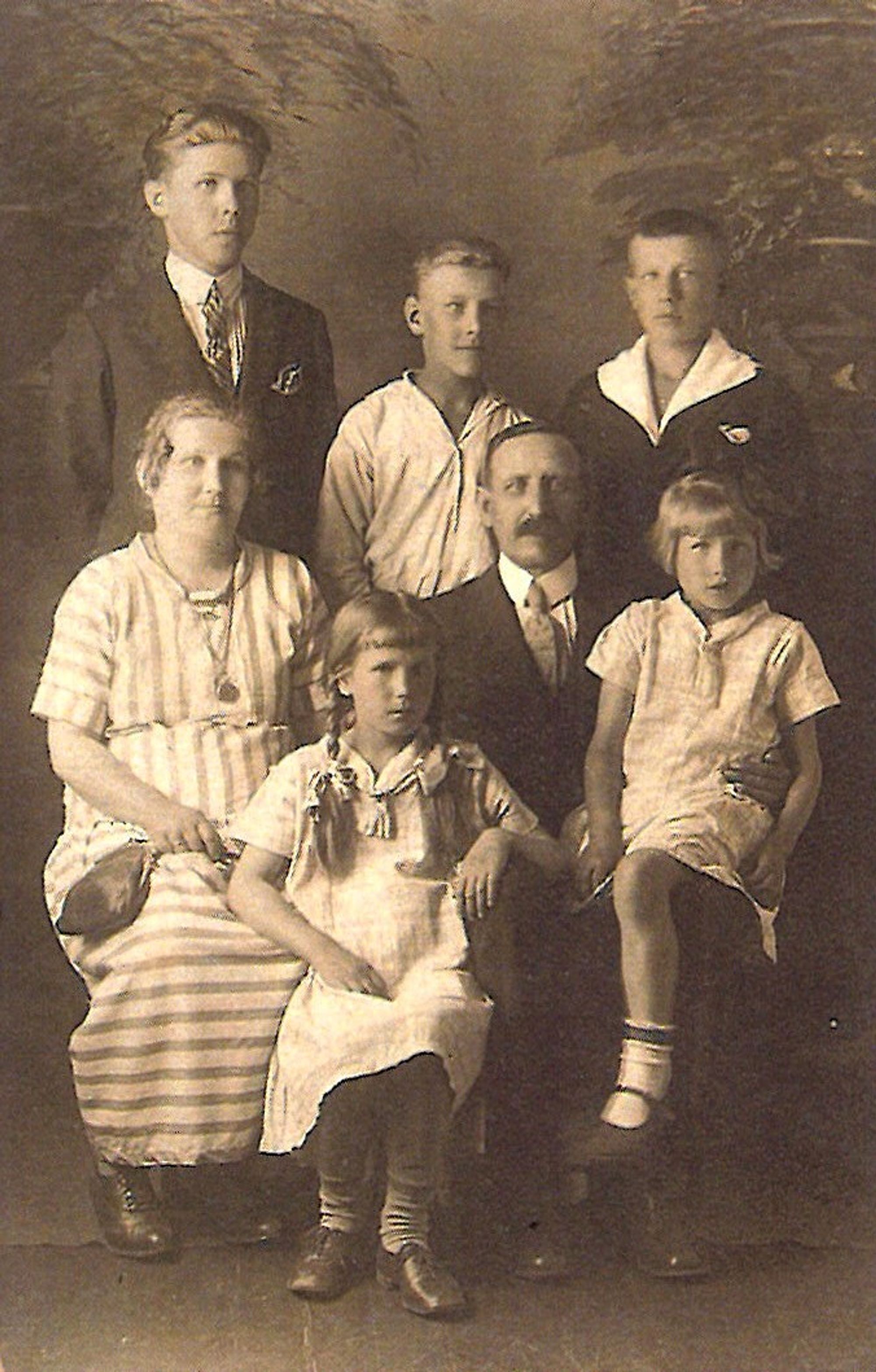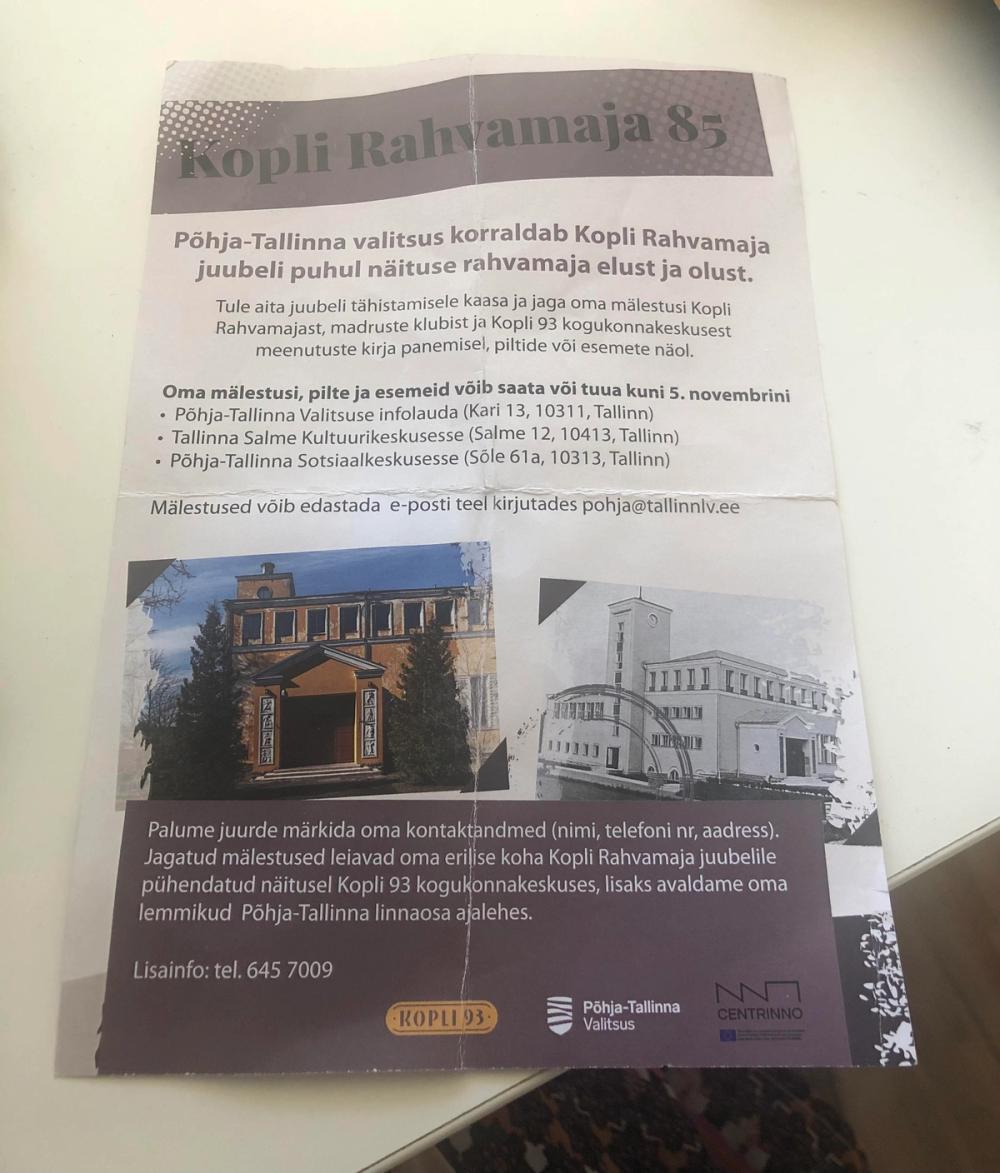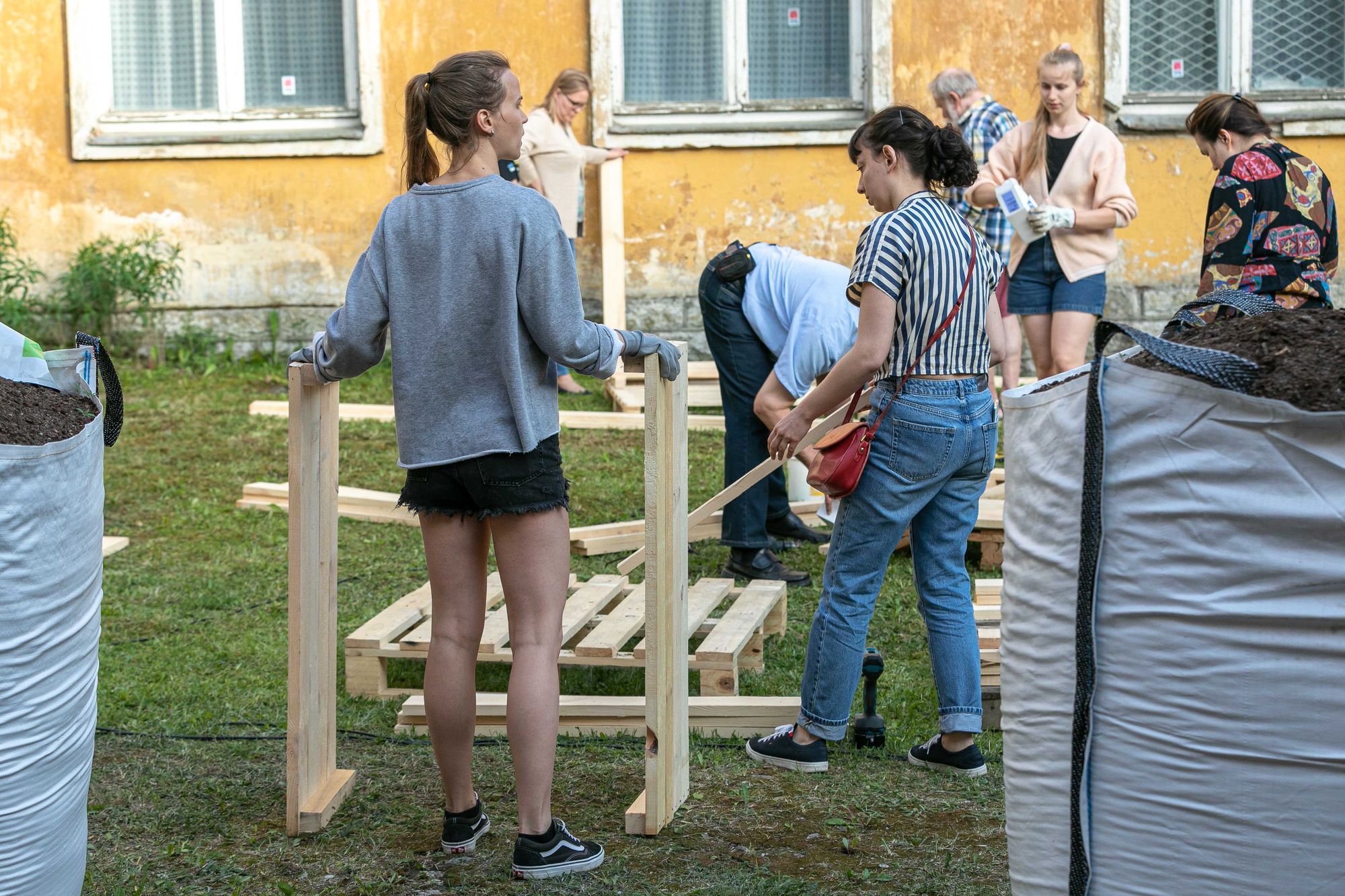In 2022, a story collection was announced by the Northern Tallinn City Administration to mark the 85th anniversary of the opening of the Kopli Folks House. The aim of collecting stories was to get stories from people which one way or another reflect the importance of the Kopli 93 building and the area itself from the people to whom this place is still special. Here are some of the stories:
Valentina, 82: In the 60s and 70s of the past century, I lived in Kopli at Kaluri 2, and nearby was the Kopli community centre (then called the sailors' club), where various events took place, such as elections to state bodies, concerts, screenings of documentaries and feature films in the first-floor auditorium, and of course dancing on weekends. There was a library and various hobby groups. Those were the happy and youthful years of my life. I was studying at the Polytechnic Institute at the time and sometimes went dancing with friends at this club. The hall on the second floor was spacious, clean and comfortable. A military patrol watched over the place. To my recollection there were never any unpleasant incidents or conflicts. When elections were held (on the second floor), the club was cleverly furnished, with a buffet selling scarce food, sweets and fruit, such as oranges, for the enjoyment of all family members. A fun and festive atmosphere prevailed all around. It was undoubtedly the kind of centre of cultural and educational life that the people of the region needed.
I have very fond memories of the club and of that time.
Heidy, 80: I remember the time when I performed at the Kopli Folk House. At that time, every community centre had its own orchestra and discos. There were also family evenings in the Kopli People's House.
At that time the Kopli peninsula was an elite district with a very active and beautiful cultural life. The communities invited us, as artists, to perform in the community hall.
Many thanks for that time!
Jelena, 65: My family is closely connected to Kopli Rahvamaja (Kopli 93).
To begin with, my grandparents had lived in Kopli on Sepa street since 1938, and in spring 1939 they were at a concert in Kopli Rahvamaja, and after the concert there was a dance evening. They were young at the time (my grandfather was 25 years old, my grandmother 30) and were looking forward to the dance evening. My grandfather told me about it, he was a great storyteller.
Then my mother went to Kopli Rahvamaja for dance evenings. There at a dance evening in January 1956 she met a boy from Ukraine, from Chuguev, Victor, and in July 1956 they were married. On August 5, 1957 I was born.
When I was studying in the primary school 41 (5 line 12), our school Christmas parties (as the assembly hall of our school was very small) were held in Kopli Rahvamaja (1964/1965, 1965/1966). We were very happy to go there for Christmas.
Also in Kopli Rahvamaja there were elections. On Election Day, the whole family would go to the elections, and I especially liked going there with my grandmother and grandfather. Going to the elections, they always dressed festively and when we went there, my grandfather always held my hand and told me about Kopli Rahvamaja (this remains forever in my memory) that the old House had burnt down and this new House had been built. And that when the new House was being laid, the first President of the Republic of Estonia, K.Päts, was present there. When we went to the polls I was given a ballot paper (they used to call them that) and I was proud to put them in the ballot box. Then we went to the cafeteria and got Alexander's Shortcake and Duchesse lemonade. I can still remember the taste of that lemonade. Then we would go to the hall; on that day there were many events from morning till night - concerts, films.
As my family worked at the BSRZ, they also often held Christmas parties at Kopli Rahvamaja, and I often went there for Christmas parties.
Also, near Kopli Rahvamaja there were very beautiful flowerbeds and benches, and my girlfriend and I loved to sit there and admire the flowers.
A little fact from my grandfather's biography - he worked as a shoemaker at the Estonia theatre and sewed pointe shoes for ballerinas. (1939).
I'm really excited about the revival of Kopli Rahvamaja, and I was just thinking about how this place should continue to please the townsfolk when I was last there in February 2019 for a vinyl record exhibition.
Jevgenia, 68: I was born in 1954 in Tallinn, specifically in Põhja Tallinn. From childhood memories it was a Christmas tree in the Sailor's Club. It was beautiful, festive and elegant - in addition to the sweet present, I received a giant rubber fish. Obviously, I read a poem. I was four years old.






